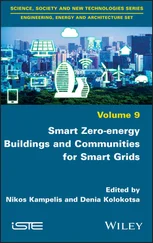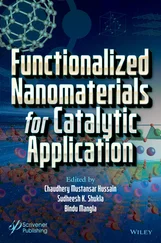Chapter 2concerns the family of inorganic nanomaterials. This field, too, has undergone considerable development in recent years, and new properties have emerged with the discovery of materials at an increasingly small level. Atom clusters, which contain from ten to a few hundred atoms and are smaller than 1.5 nm in size, possess physico-chemical properties which set them apart from larger NPs; this is a result of their spatial confinement. Quantum dots (QD), which are generally made up of binary alloys of semiconductors (SC), constitute another important family of nanomaterials and are particularly notable for their luminescent properties. The latest set of 2D materials include dichalcogenides of transition metals, along with a significant number of inorganic lamellar materials; the interest of these materials is already apparent, particularly in terms of their applications in the energy sector.
The second part of this book constitutes a critical study of new problems in the domain of energy, notably in terms of energy transition and preserving the environment. The fight to reduce greenhouse gas emissions raises two major problems: those of storing and converting energy. Nanotechnologies and nanomaterials stand to make a decisive contribution to solving these issues.
Chapter 3is devoted to the key question of energy storage, a major challenge linked to the development of renewable energies. This field encompasses large-capacity static storage, the production of batteries and supercapacitors for electric vehicles, and also microbatteries, designed to provide power for small portable electronic devices. All of these different systems are subject to different constraints, leading us to focus on different design choices.
Chapter 4concerns energy conversion, notably in terms of photovoltaic sources and lighting. Solar power is nothing new, but huge progress has been made in recent years, notably with the development of organic photovoltaics and that of perovskites; these solutions provide a genuine alternative to inorganic silicon-based systems, and, importantly, are more cost-effective. Lighting and display devices constitute another important subject in the energy field, notably in connection with the general phenomenon of electroluminescence. The overarching goal is to reduce energy consumption while providing a better quality of lighting than that obtained using incandescent bulbs or neon tubes. Considerable advances have been made over the last few years; as before, parallel developments in inorganic and organic nanomaterials have found practical applications in this area. The development of new forms of memory electronics (not covered in this book) is another important area of research, where once again the reduction of energy consumption is a major goal.
Chapter 5concerns electrocatalysis and photocatalysis. Electrocatalysis relates primarily to the development of electrolysis cells (water splitting) and fuel cells, a main focus for future advances in converting chemical energy into electrical energy. Hydrogen is a particularly promising source of fuel: it is non-polluting, and constitutes a highly efficient means of transporting and storing energy. One especially promising area of research relates to the production of hydrogen by electrolyzing water, powered by a photovoltaic cell. This development is connected to the broader aim of developing systems which use non-precious metals to catalyze oxygen evolution reactions (OER) and oxygen reduction reactions (ORR). This area of research is essential for the optimization of water splitting and H 2/O 2fuel cells. Extensive research is also underway on the subject of photocatalysis: the aim in this case is to optimize the use of solar energy for carrying out chemical transformations. Photocatalysis can also be combined with electrolysis reactions (photo-electrocatalysis) in order to transform ordinary compounds into high-added-value compounds, or into energy products which may be used either for storage or as a fuel source.
We dedicate this book in memory of Jacques-Emile Dubois, eminent member of the Science Faculty of the University of Paris and founder of the ITODYS laboratory, who would have celebrated his 100th birthday this year, were he still among us. Professor Dubois was a pioneer and outstanding practitioner of the multidisciplinary approach to science in the realm of Physical Organic Chemistry. He blazed a trail in his revolutionary application of Computer Science to Chemistry, as well as in launching the study of phenomena at the solid-liquid interface. His drive and enthusiasm for uncovering and delving into virgin areas of research were and remain a source of inspiration to many.
1 1 The term nanotechnology was first used in the 1970s by the Japanese scientist Noria Tanegouchi to denote the body of research concerning materials with dimensions in the tens of nanometers at most.
2 2 Ernst Ruska was the first to suggest using electron beams to observe microscopic objects via a transmission mechanism. Ruska produced the first commercial electron microscope, in collaboration with Siemens, in 1933. He went on to devote his whole scientific career to improve this technique, which earned him a Nobel Prize in 1986.
PART 1 Nanomaterials and Nanotechnologies
Конец ознакомительного фрагмента.
Текст предоставлен ООО «ЛитРес».
Прочитайте эту книгу целиком, купив полную легальную версию на ЛитРес.
Безопасно оплатить книгу можно банковской картой Visa, MasterCard, Maestro, со счета мобильного телефона, с платежного терминала, в салоне МТС или Связной, через PayPal, WebMoney, Яндекс.Деньги, QIWI Кошелек, бонусными картами или другим удобным Вам способом.












